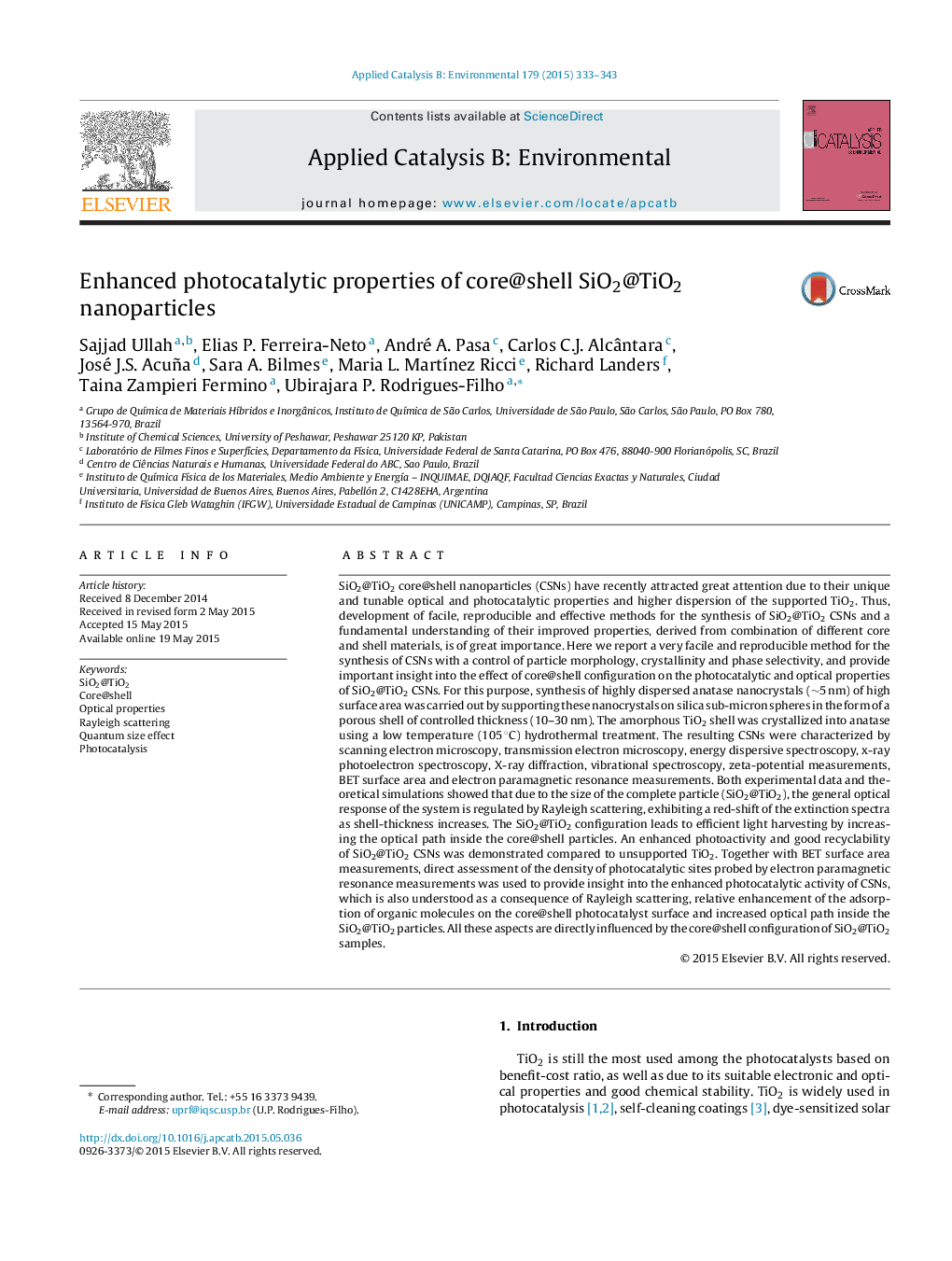| کد مقاله | کد نشریه | سال انتشار | مقاله انگلیسی | نسخه تمام متن |
|---|---|---|---|---|
| 45463 | 46412 | 2015 | 11 صفحه PDF | دانلود رایگان |

• Reproducible, phase-selective synthesis of silica-supported anatase (SiO2@TiO2).
• Crystallization of anatase by low temperature (T = 105 °C) hydrothermal method.
• Control of crystallites size (∼5 nm), loading and shell-thickness (10–30 nm) of TiO2.
• SiO2@TiO2 nanocatalyst has better photoactivity than unsupported TiO2.
• Correlation between structure, optical and photoactivity is presented.
SiO2@TiO2 core@shell nanoparticles (CSNs) have recently attracted great attention due to their unique and tunable optical and photocatalytic properties and higher dispersion of the supported TiO2. Thus, development of facile, reproducible and effective methods for the synthesis of SiO2@TiO2 CSNs and a fundamental understanding of their improved properties, derived from combination of different core and shell materials, is of great importance. Here we report a very facile and reproducible method for the synthesis of CSNs with a control of particle morphology, crystallinity and phase selectivity, and provide important insight into the effect of core@shell configuration on the photocatalytic and optical properties of SiO2@TiO2 CSNs. For this purpose, synthesis of highly dispersed anatase nanocrystals (∼5 nm) of high surface area was carried out by supporting these nanocrystals on silica sub-micron spheres in the form of a porous shell of controlled thickness (10–30 nm). The amorphous TiO2 shell was crystallized into anatase using a low temperature (105 °C) hydrothermal treatment. The resulting CSNs were characterized by scanning electron microscopy, transmission electron microscopy, energy dispersive spectroscopy, x-ray photoelectron spectroscopy, X-ray diffraction, vibrational spectroscopy, zeta-potential measurements, BET surface area and electron paramagnetic resonance measurements. Both experimental data and theoretical simulations showed that due to the size of the complete particle (SiO2@TiO2), the general optical response of the system is regulated by Rayleigh scattering, exhibiting a red-shift of the extinction spectra as shell-thickness increases. The SiO2@TiO2 configuration leads to efficient light harvesting by increasing the optical path inside the core@shell particles. An enhanced photoactivity and good recyclability of SiO2@TiO2 CSNs was demonstrated compared to unsupported TiO2. Together with BET surface area measurements, direct assessment of the density of photocatalytic sites probed by electron paramagnetic resonance measurements was used to provide insight into the enhanced photocatalytic activity of CSNs, which is also understood as a consequence of Rayleigh scattering, relative enhancement of the adsorption of organic molecules on the core@shell photocatalyst surface and increased optical path inside the SiO2@TiO2 particles. All these aspects are directly influenced by the core@shell configuration of SiO2@TiO2 samples.
Figure optionsDownload as PowerPoint slide
Journal: Applied Catalysis B: Environmental - Volume 179, December 2015, Pages 333–343